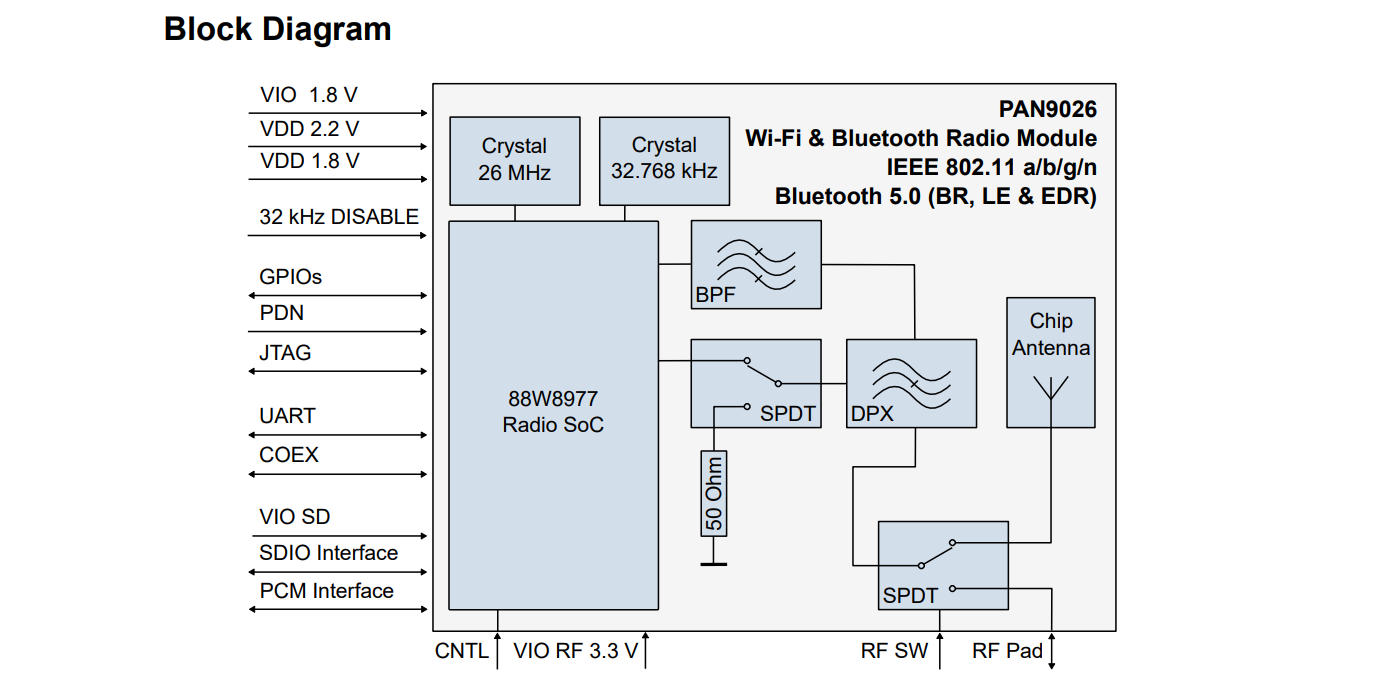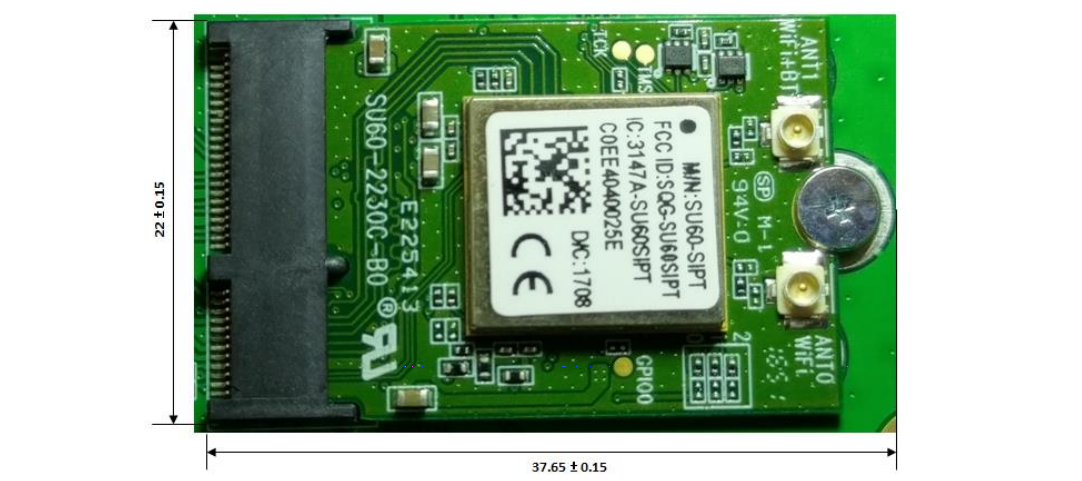
According to Security Today, 127 IoT devices are scheduled to come online every second, and each of those devices will need to communicate over one or more standard protocols. Bluetooth, LoRaWAN, Wifi, cellular services, and other standard protocols may appear on an individual device, and integrating these features onto the same board is much easier when you have access to inexpensive SoCs with integrated features. Among these various protocols, Wifi will continue to be the most popular.
A quick way to bring Wifi into new products while reducing total product cost and cutting down design complexity is to use a dual-band Wifi module. These modules provide communication at 2.4 GHz up to 5.8 GHz, and they include more features than just a dual-band Wifi transceiver. Additional integrated features range from an integrated MCU with on-board memory to Bluetooth connectivity. Here are some dual-band Wifi module options you can use to build your IoT ecosystem.
Working with a Dual-band Wifi Module
The PCB design points involved in working with a dual-band Wifi module are not any more complicated than those involved in working with other Wifi protocols. Stackup design, routing, and circuit block isolation are the critical points involved in ensuring digital portions of the system and analog signals from your transceiver do not interfere. When building an IoT system for dual-band communication over Wifi, how you layout the board will be a major determinant of signal quality and reliability. The same ideas apply to RF transceivers for other communication protocols, such as cellular or mmWave.
Dual-band Wifi modules make the design process easier in a number of ways. An RF transceiver is a great option if you’re innovating something entirely new, or if integrated modules simply aren’t available. Dual-band Wifi modules integrate communication capabilities over 2.4 GHz and 5/5.8 GHz bands, but they can also include other features that are desirable for IoT products. A dual-band Wifi module provides the following capabilities to help simplify your design process and your overall system design:
-
Integrated antenna. These modules tend to include an integrated antenna on the package, which eliminates the need for impedance matching network design. These modules may include a chip antenna or patch antenna.
-
Easy programmability. These modules can be programmed over standard interfaces (SPI, UART, etc.), allowing the output band to be selected with an external MCU. Some modules will integrate the MCU into the package, and the manufacturer will provide an SDK for building an application on the module.
-
Pre-designed stackup. These modules may come packaged on a surface-mountable or pluggable board, which already uses a pre-designed stackup to ensure signal and power integrity.
-
Bluetooth integration. Some modules will include Bluetooth integration, which can be activated within the firmware or through an enable pin with an external MCU.
-
FCC modular use approval. If you want to sell your product in the US, it will need to pass regulatory standards on wireless products. The best dual-band Wifi modules on the market will have already received FCC approval for use as a modular device. Be sure to check for any approvals for other regions.
These modules can have high cost per part, but the integration they provide can reduce your overall BOM cost. Integrating these features onto a single package also reduces routing complexity for your analog section. Assuming you do not have other analog frequency blocks on your PCB, everything you need will be contained in a single region, which aids PCB layout.
Low-cost Dual-band Wifi Modules
If you want to save time and expense on design and layout, here are some dual-band Wifi modules that have become popular recently. All of these modules highlight the integration that is possible with an SoC, as well as the ease with which they can be brought into your next PCB. These particular modules also have FCC modular use approval.
Panasonic, ENW-F9208A1EF
The ENW-F9208A1EF dual-band Wifi SoC from Panasonic integrates a Bluetooth 5.0 transceiver and supports a variety of applications under the IEEE 802.11 standards. This component supports 802.11i security standards through AES encryption and other security mechanisms. It also supports 802.11e Quality of Service for multimedia applications. This component requires 3.3, 2.2, and 1.8 power supply, and it integrates a chip antenna with +16 dBm Tx power and -96 dBm Rx sensitivity.
 Block diagram of the ENW-F9208A1EF dual-band Wifi module, from the ENW-F9208A1EF datasheet.
Block diagram of the ENW-F9208A1EF dual-band Wifi module, from the ENW-F9208A1EF datasheet.
Laird, ST60-2230C-UU
The ST60-2230C-UU dual-band Wifi module from Laird integrates all the components required for dual-band Wifi and Bluetooth into a single package. This module provides a high data transfer rate between the module and a motherboard up to PCIe Gen 2 speeds. This module has a PCIe Mini form factor with an edge connector, and it includes SMA connectors on the module for connection to external antennas.
 Photograph of the ST60-2230C-UU dual-band Wifi module in a PCIe edge connector, from the ST60-2230C-UU datasheet.
Photograph of the ST60-2230C-UU dual-band Wifi module in a PCIe edge connector, from the ST60-2230C-UU datasheet.
Murata, LBEE5ZZ1CK-982
The LBEE5ZZ1CK-982 from Murata is another dual-band Wifi module that also provides connectivity via Bluetooth 4.1. This module connects to a motherboard via a HIROSE connector, giving a flat profile on a motherboard. This module includes an integrated antenna with high isolation from the other digital components.
 LBEE5ZZ1CK-982 dual-band Wifi module connection mode through a HIROSE connector, from the LBEE5ZZ1CK-982 datasheet.
LBEE5ZZ1CK-982 dual-band Wifi module connection mode through a HIROSE connector, from the LBEE5ZZ1CK-982 datasheet.
A dual-band Wifi module gives you a simple way to integrate multiple functions onto a single package, which helps reduce your design time and complexity. When your module integrates an MCU onto the board, you can focus on firmware development to ensure required functionality. Other single-band equivalent Wifi modules are available, but IoT product designers should expect a need to continue operating under IEEE 802.11b/g/n/ac in the short term. Once Intel’s line of Wifi 6 modules become more widely available, designers will have the ability to provide greater connectivity across multiple devices.
When you’re looking for a dual-band Wifi module for your new system, try the parts search and filtration features in Octopart. You can also start searching for your next dual-band Wifi module or other RF components using our RF semiconductors and devices category page.
Stay up-to-date with our latest articles by signing up for our newsletter.